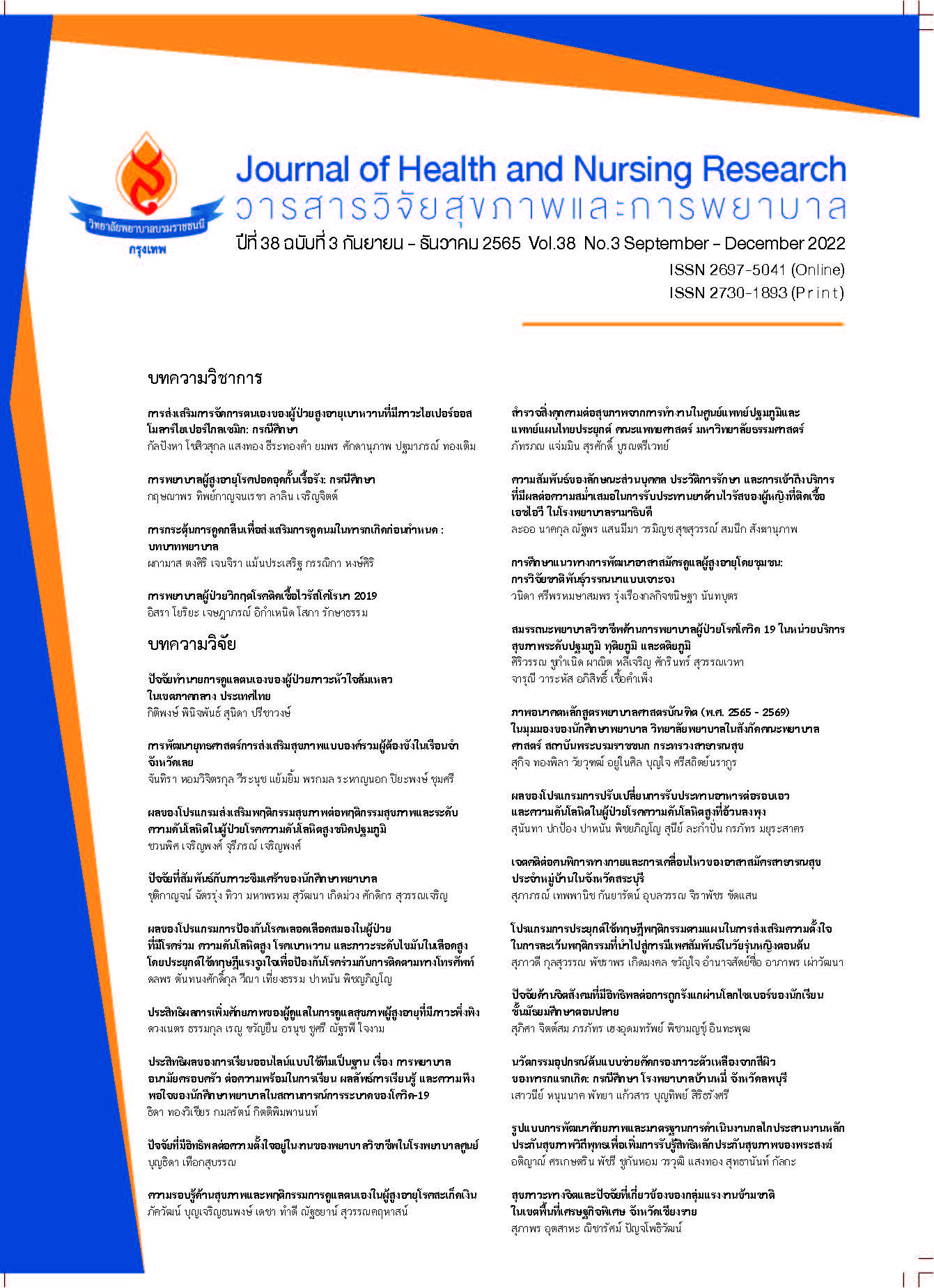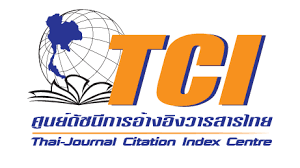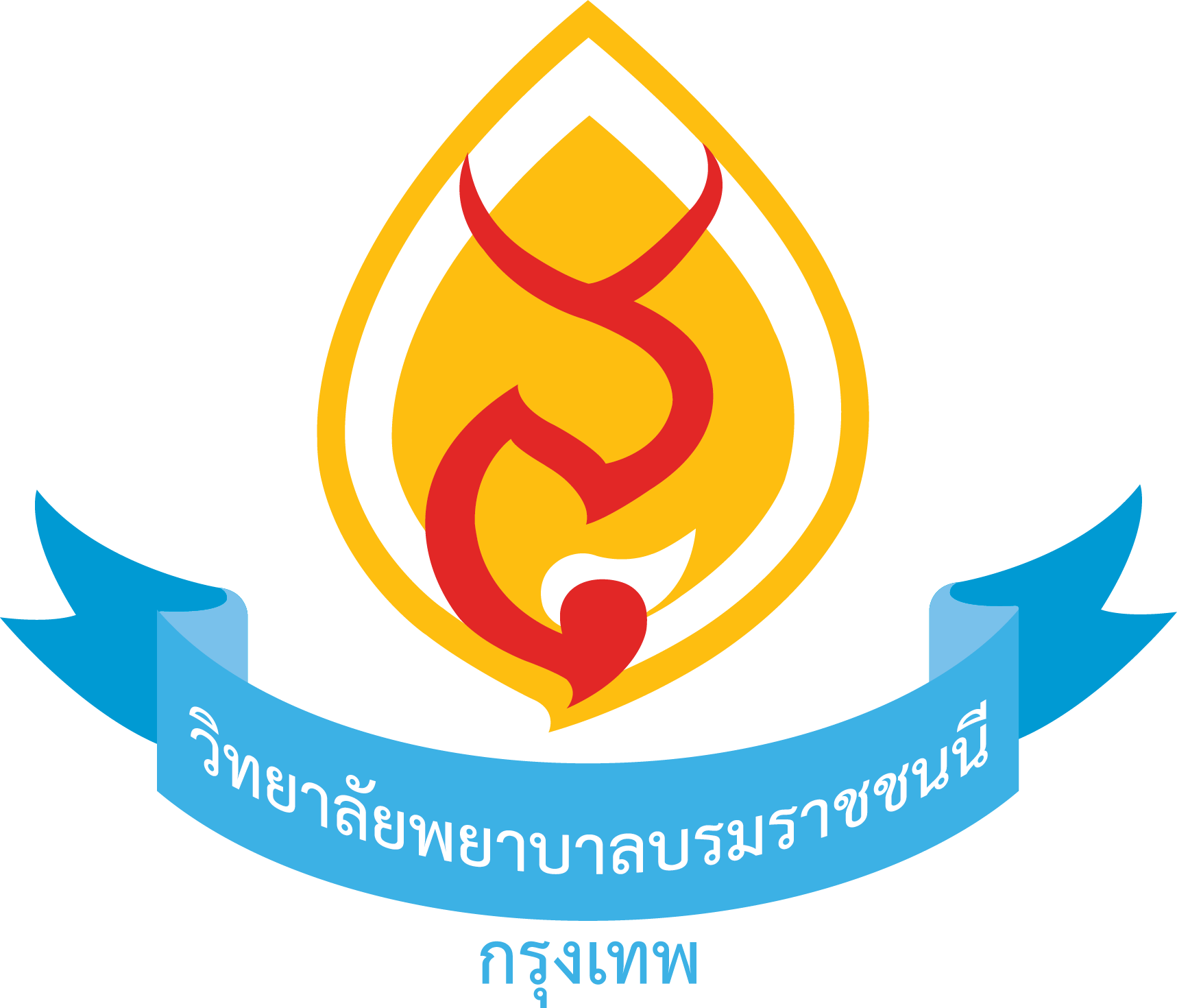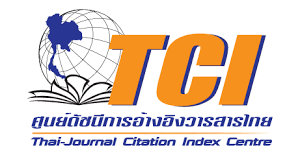The Effects of a Stroke Prevention Program among Comorbid Hypertensive, Diabetes Mellitus, and Hyperlipidemia Patients by Applying Protection Motivation Theory with Telephone Follow-up
Keywords:
stroke prevention program, protection motivation theory, telephone follow-upAbstract
Introduction: Cerebrovascular disease or stroke is a major public health concern in Thailand. In particular, patients with comorbidities of hypertension, diabetes mellitus, and hyperlipidemia are at a greater risk of developing stroke given its impacts on the vessels.
Research objective: To examine the effects of a stroke prevention program on patients with comorbidities of hypertension, diabetes mellitus, and hyperlipidemia.
Research methodology: This study employed a quasi-experimental study, consisting of two groups: the experimental group and the comparison group with 32 participants in each group. Data collection consisted of three phases: pre-test, post-test at 4th week and follow-up test at 8th week. Data were analysed using descriptive statistics, Chi-square test, Repeated-measure ANOVA, Independent t-test, and Paired t-test.
Results: At 4th week post-test, and 8th week follow-up, the experimental group reported that the average score of stroke preventive behaviors was significantly higher than the pre-test phase, and that of the comparison group (p< .001). Moreover, the experimental group reported that at 4th week post-test, and 8th week follow-up, their blood pressure level, blood sugar level, and LDL-C level were significantly lower than the pre-test phase, and that of comparison group (p< .05).
Conclusion: The stroke prevention program has shown significant impact on the stroke preventive behaviors, blood pressure level, blood sugar level, and LDL-C level, particularly among patients with commodities, including hypertension, diabetes mellitus, and hyperlipidemia.
Implications: These findings could be used as a preventive guideline for healthcare providers to improve the quality of care for patients with multiple chronic health conditions, including hypertension, diabetes mellitus, and hyperlipidemia, to prevent stroke and other chronic diseases such as coronary artery disease, and renal failure.
Downloads
References
World Stroke Organization. World stroke campaign [Internet]. 2019 [cited 2020 November 5]. Available from: https://www.world-stroke.org/world-stroke-day-campaign
Bureau of Policy and Strategy, Ministry of Public Health [Internet]. Public health statistic. 2019 [cited 2020 November 11]. Available from: https://bps.moph.go.th/new_bps/sites/default/files/statistic62.pdf. (in Thai)
Bureau of Policy and Strategy, Ministry of Public Health. Health at a glance Thailand 2017. 1st ed. Bangkok: Srimuang Printing; 2017. (in Thai)
Suwanwela NC. Stroke epidemiology in Thailand. J Stroke 2014; 16(1): 1-7
Prasat Neurological Institute, Ministry of Public Health. Stroke clinical practice guideline for nursing. Bangkok: Thana Place; 2015. (in Thai)
Office of the Permanent Secretary Ministry of Public Health, Ministry of Public Health [Internet]. KPI024.1: Stroke death rate (Stroke: I60-I69). 2020 [cited 2020 November 11]. Available from: http://healthkpi.moph.go.th/kpi2/kpi/index/?id=1428&kpi_year=2563. (in Thai)
Momala K, Kongkam P. Factors affecting to Stroke prevention behaviours of chronic disease patients at Bankao Health Promoting Hospital, Photharam District, Ratchaburi Province. HCU Journal 2020; 24(2): 172-85. (in Thai)
Rogers RW. Cognitive and physiological processes in fear appeals and attitude change: A revised theory of protection motivation. In Cacioppo JT, Pretty RE, editors. Social psychophysiology: A source book. New York: Guilford Press; 1983. p.153-76
Thailand Nursing and Midwifery Council. Guideline for tele-nursing [Internet]. 2021 [cited 2021 March 12]. Available from: https://www.tnmc.or.th/images/userfiles/files/T_0049.PDF. (in Thai)
Avery G, Cook D, Talens S. The impacts of a telephone-based chronic disease management program on medical expenditures. Population Health Management 2016; 19(3): 156-62
Kampan S, Chokchinon A, Junpanit U. Telephone call visit program for out patients receiving service from nurse anesthetist. Thai Journal of Nursing and Midwifery Practice 2015; 2(1):45-54. (in Thai)
Cohen J. Statistical power analysis for the behavioral science. 2nd ed. New Jersey: Lawrence Erlbaum Associates; 1988
Siriket R, Sittipakorn S, Hornboonherm P. Effects of the protection motivation program on protective behavior of the high risk stroke. Srinagarind Med J 2015; 30(3): 299-304. (in Thai)
Khiawkhwao P, Thiangtham W, Boonyamalik R. The effects of the cerebral vascular disease prevention program in high-risk group patients. Journal of Health and Nursing Research 2019; 35(3): 120-32. (in Thai)
Supanikorn C, Thiangtham W, Boonyamalik P. The application of protection motivation theory in promoting the behaviors slowing down the progression of degeneration of CKD stage 3 patients in a community. Nursing Journal of the Ministry of Public Health 2019; 29(2): 165-77. (in Thai)
Tiparat W, Suwanweala S, Sumrit W. The effects of self-awareness development program on stroke prevention behaviors among hypertension patients in Muang District, Trang Province. The Southern College Network Journal of Nursing and Public Health 2017; 4(2): 94-107. (in Thai)
Intaboot K, Kalampakorn S, Pichayapinyo P. The effects of a self-management and social support program for new cases with type 2 diabetes. Journal of Public Health Nursing 2017; 31(2): 11-27. (in Thai)
Somrit T. Effectiveness of behavior changing program to decrease low-density lipoprotein among clients at health checkup clinic in Chiangkham Hospital, Phayao Province. Journal of the Phrae Hospital 2020; 28(2): 80-91. (in Thai)
Downloads
Published
How to Cite
Issue
Section
License
Copyright (c) 2022 Journal of Health and Nursing Research (Journal of Boromarajonani College of Nursing, Bangkok)

This work is licensed under a Creative Commons Attribution-NonCommercial 4.0 International License.
Article published Is the copyright of the Journal of Health and Nursing Research (Boromarajonani College of Nursing, Bangkok) Cannot be republished in other journals

















